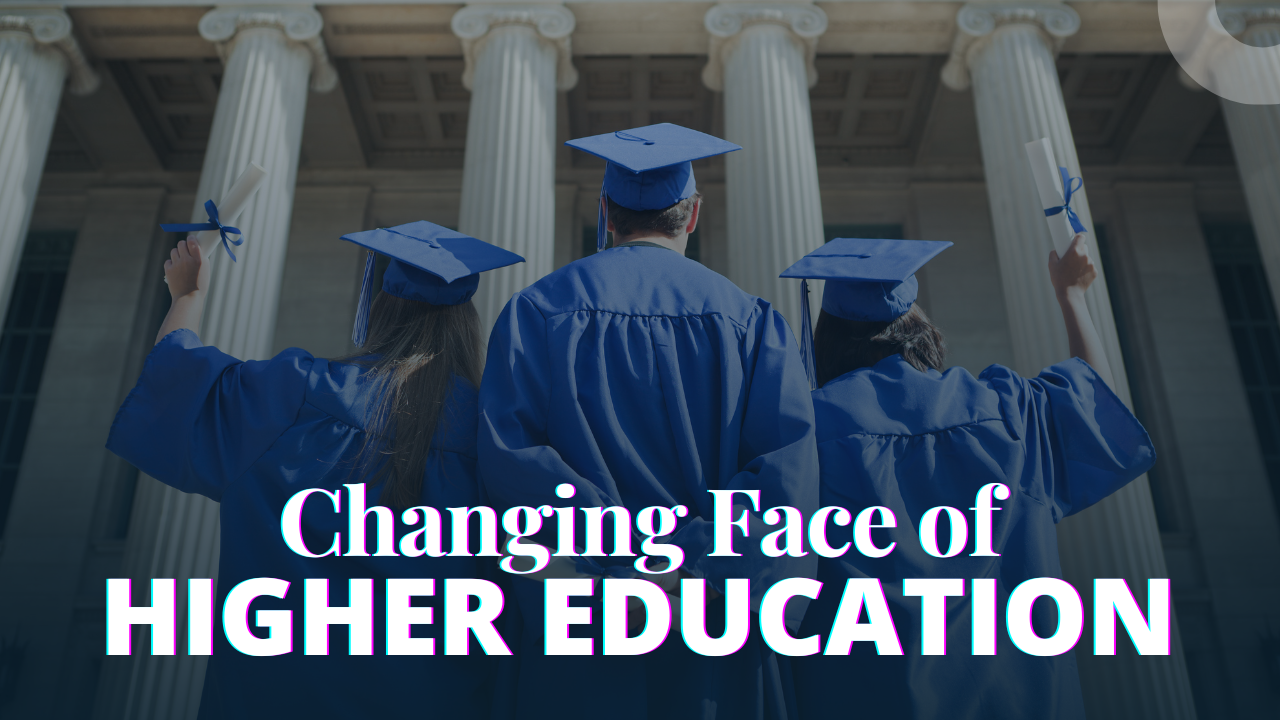The Changing Face of Higher Education: How Colleges and Universities are Transforming Themselves
Education has been the pinnacle of the human race. In time and again, we have gone through and developed different hybrids of learning and implementing them to advance as a society. In the long run, the budding technology is leading us towards a significant change and allowing us to explore learning on a whole another level.
With the COVID-19 stirring our lives and the structural layout of our education system in the last few years, the ways of teaching as well as learning required an updated approach. It definitely gave a chance to the education sector to instill technology in day-to-day learning modes of schools and colleges. Students and teachers around the world were forced to connect through online classes.
Virtual classes are dynamically offering an array of endless sources of information. We cannot help but wonder at the vastness and range technology has now provided us which is effortlessly offering students worldwide a space to articulate and critique.
With many learning institutions turning towards hybrid classrooms, the limited walls of the classrooms are now way beyond. Now, students are learning at their own pace, and the constant pressure to fit into the box of average learning is slowly disappearing. Indeed, traditional methods work towards the stabilization of the education system, but technology is helping to shape the new language of education.
Saying so, the demand of society is constantly expanding. Now, the era of, ‘ sage on the stage is almost over and the teachers are fundamentally in a phase that can be highlighted as, a ‘guide on the side’. Institutions around the world are offering a flexible approach that is actually focusing on providing education that enhances the skill sets of the student and is rather conceptual and practical against the theoretical source of knowledge.
In similar ways, methods of teaching in many institutions are now diverting towards active learning and skill specifics. Teaching through methods that not only help the students to summarize the information well but also allow the professors to demonstrate the multiway transfer of knowledge. Therefore, leading to extraordinary outcomes for either party. The institutions are now leaning towards active and engaging learning that is permitting the students labeled as weak traditionally to catch up.
In the constantly changing spectrum of teaching and learning, universities are also paying heed to the fact that the skills taught today must be relevant in future workplaces. It has now turned into the utmost responsibility of the educational institutions’ skills to be taught must be ready and changing as per the dynamics and trends of the particular field. Enduring skills that require critical and creative thinking are now seen as the laying foundation of a strong skill set and a reformed habit of mind.
Another phenomenal change that is stirring the way education is looked at today is the escape from the conventional methods of examinations. The age of recitation is over, and it is now understood more than ever that replication methods of examinations are nothing more than an age-old established custom. Also, it doesn’t really highlight the fields in which a student excels. Now, as we go towards a new world of modern education, there is finally a realization that all animals don’t swim the way a fish does. To see it that way, assuming that all students have the same caliber is old school. Now, through progressive ways of education, tests are more standardized and activity based. Assessments that focus highly on the evaluation of student’s performance are giving a scare to the traditional methods of examinations. The overall reformation lets the students do not see the examinations as a hurdle or a memorizing activity but as a stepping stone towards better learning. As a result, the competencies acquired by the students are more holistic than ever. There is no denying the fact that there is a long way to go and we have hardly reached anywhere. But when we talk about the education system as a whole, there are a lot of things to be put into consideration. It is a package where an institute needs to understand the various aspects of what is being taught, how it is done, who is doing it, and whether the receiving end is able to comprehend it well. The ideal notion of getting educated should be to improve the future of students that so heavily invest a part of their lives in it. And with every step towards it, we will make a significant change.

